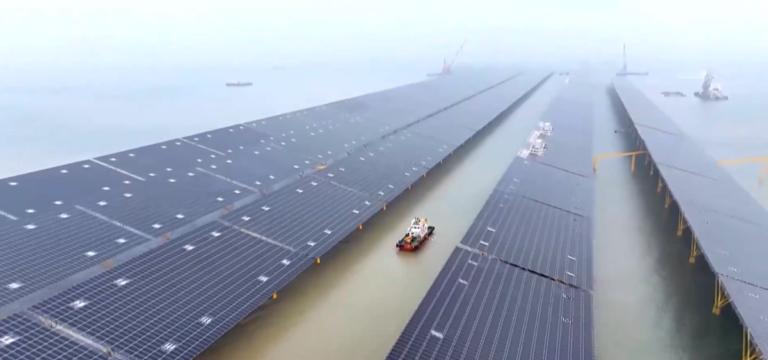The Jiangsu provincial government has launched a marine solar development plan (2025-30), aiming to expand the region’s coastal solar capacity with 60 projects totaling 27.25 GW. The plan sets ambitious targets to build 10 GW by 2027 and up to 20 GW by 2030.
Major development sites have already been identified in Jiangsu’s coastal cities and provinces. Nantong will host 33 projects with a total of 11.44 GW, Lianyungang will have 13 projects with 5.35 GW, and Yancheng will develop 14 projects with a total of 10.46 GW, all contributing to the target of 27.25 G.W.
Offshore PV projects at the national level led by state-owned energy groups will also progress. China National Nuclear Corp. (CNNC) is making progress with 2 GW in Tianwan and 400 MW in Qidong, while State Power Investment Corp. (SPIC) is developing 400 MW in Rudong. These projects are expected to meet timelines and contribute to Jiangsu’s offshore PV capacity.
State Grid Jiangsu Electric Power Co. will oversee the infrastructure needed to support the large-scale PV installations. The company plans to build 16 to 20 220 kV onshore substations and high-voltage transmission lines in Nantong, Lianyungang, Yancheng, Guanyun County, Xiangshui County, Dafeng District and Dongtai City to ensure the stable supply of offshore solar energy.
All projects will include advanced energy storage systems (ESS) to improve stability and efficiency. They will provide at least 10% of installed capacity, with the ability to sustain production for two hours.
The Jiangsu Development and Reform Commission noted the importance of encouraging private enterprises and capital to invest in and operate offshore PV projects, using market mechanisms to accelerate growth in the sector and improve the energy mix of the optimize the region.
The initiative establishes Jiangsu as a leader in China’s offshore solar sector, providing a model for the nationwide development of offshore PV and paving the way for future renewable energy projects across the country.
This content is copyrighted and may not be reused. If you would like to collaborate with us and reuse some of our content, please contact: editors@pv-magazine.com.
Popular content



